
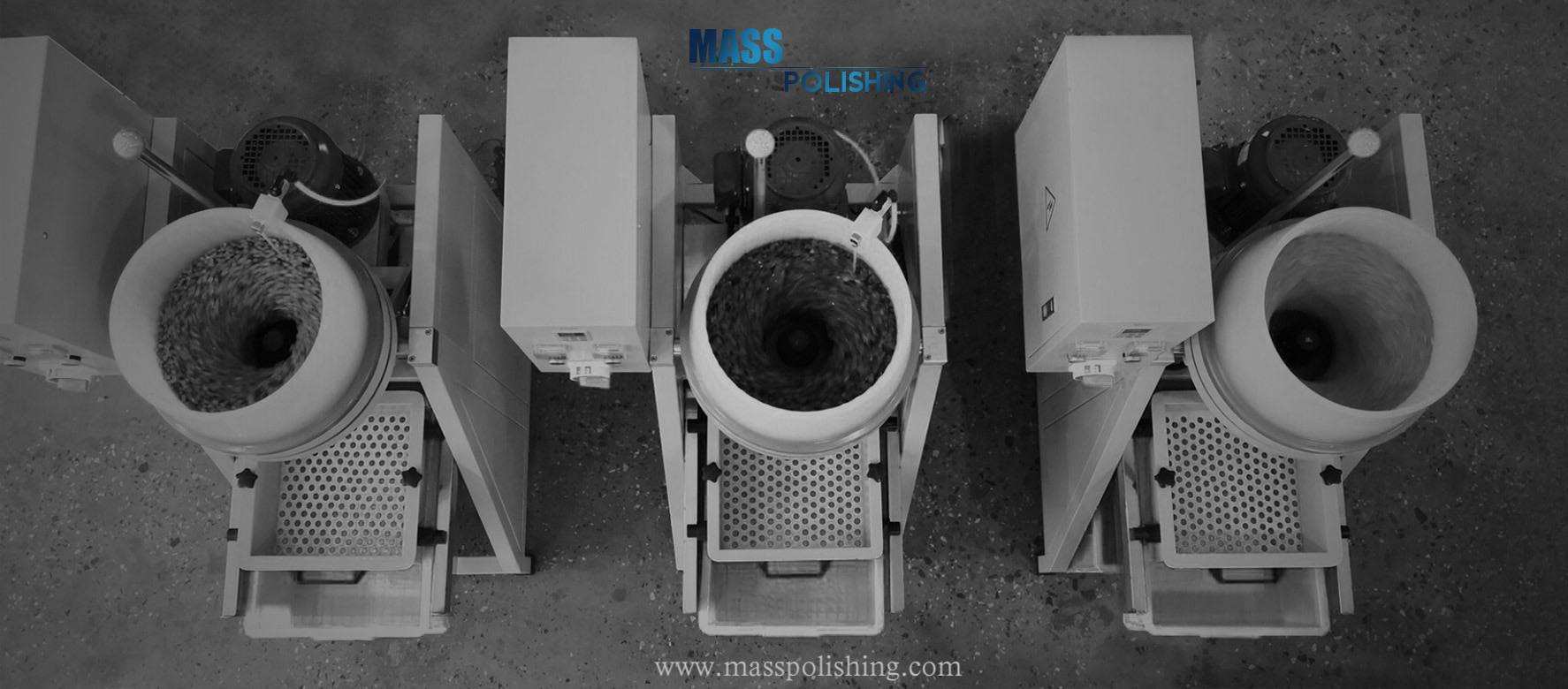
Polishing titanium parts requires a different approach than polishing other metals due to the unique properties of titanium. The following step-by-step guide will walk you through the process of polishing titanium parts using a centrifugal disc finishing machine.
Any dirt, debris, or oils present on the surface can interfere with the polishing process and result in an uneven finish. Before beginning the polishing process, it is important to thoroughly clean the titanium parts to remove any dirt, debris, or oils that may be present on the surface. Using a mild soap and water solution is a good way to remove any surface contaminants. After cleaning, be sure to rinse the parts thoroughly with water to remove any residual soap or debris.
When polishing titanium parts, it's important to use a non-abrasive media to avoid scratching or damaging the surface of the titanium. Plastic media or porcelain media are good choices for this purpose.
Plastic media is a relatively soft media that is effective at removing burrs and other surface imperfections from titanium parts. It is available in a range of shapes and sizes, including cones, cylinders, and stars, making it suitable for a variety of part shapes and sizes.
Porcelain media is a harder media that is capable of producing a high-gloss finish on titanium parts. It is available in a variety of shapes and sizes, including balls, cones, and cylinders, making it suitable for a range of part shapes and sizes.
Both plastic and porcelain media are available in a range of abrasive levels, from very fine to coarse. It's important to choose a media with the appropriate abrasive level for the specific polishing application, as using a media that is too abrasive can damage the surface of the titanium.
In addition to plastic and porcelain media, other non-abrasive media that can be used for polishing titanium parts include ceramic media, stainless steel media, and walnut shell media.

Adding the appropriate amount of lubricant, such as water or oil, is an important step when polishing titanium parts using a disc finishing machine. The lubricant helps to reduce friction and heat during the polishing process, which can help to prevent damage to the surface of the titanium.
The amount of lubricant that is added will depend on the specific polishing application and the type of media that is being used. In general, a good rule of thumb is to add enough lubricant to fully cover the media and the parts being polished.
Water is a commonly used lubricant for polishing titanium parts, as it is readily available and inexpensive. It is also non-reactive and non-flammable, which makes it a safe choice for most polishing applications. However, in some cases, oil-based lubricants may be preferred, as they can provide a higher level of lubrication and help to extend the life of the media.
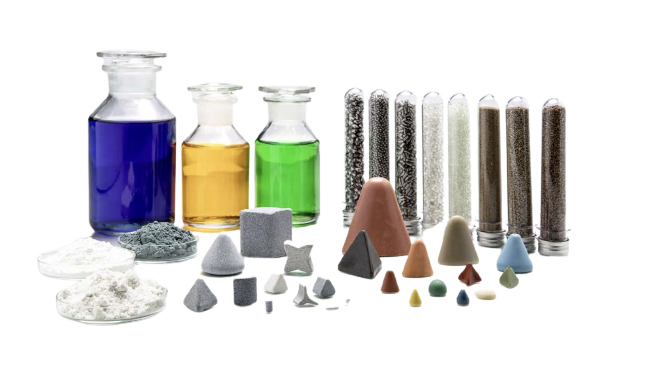
Choosing the right lubricant for polishing titanium parts depends on several factors, including the type of media being used, the type of titanium parts being polished, and the desired finish.
Here are some general tips for choosing a lubricant:
1) Consider the type of media:
Different types of media may require different types of lubricants to achieve the desired finish. For example, porcelain media may require a water-based lubricant, while plastic media may require an oil-based lubricant.
2) Check for compatibility:
Make sure the lubricant is compatible with the type of titanium parts being polished. Some lubricants may react with certain types of titanium, causing discoloration or other damage.
3) Consider the desired finish:
The type of lubricant used can have an impact on the final finish of the polished parts. Water-based lubricants are often used for achieving a high-gloss finish, while oil-based lubricants can provide a more matte finish.
4) Consider the application:
The environment in which the parts will be used may also impact the choice of lubricant. For example, if the parts will be used in a high-temperature environment, a lubricant that can withstand high temperatures may be needed.
In general, water-based lubricants are a safe and effective choice for polishing titanium parts, as they are non-reactive and non-flammable. However, it's important to choose a lubricant that is appropriate for the specific application and that will provide the desired finish.
Turn on the centrifugal disc finisher and let it run for a few minutes to ensure that the media and lubricant are evenly distributed throughout the machine.
Once the machine is running smoothly, add the titanium parts to the machine. Be sure to keep an eye on the parts during the polishing process to ensure that they are not being damaged.
You may want to periodically check the parts themselves to see if any damage or scratches are appearing on the surface. If you notice any issues, you can adjust the parameters of the polishing process, such as reducing the intensity of the vibration or adding more lubricant.
It's important to note that different types of titanium parts may require different parameters for the polishing process. For example, parts with complex geometries or thin walls may require a gentler polishing process to avoid damage. So it's always a good idea to test the process on a small batch of parts before scaling it up to larger quantities.
Adjust the speed: The speed of the machine affects the polishing time and the level of finish achieved. Adjust the speed based on the size of the titanium parts, the type of media used, and the desired finish. Higher speeds will result in faster polishing times, but lower speeds may be necessary for delicate or intricate parts.
Adjust the timer: Set the timer to the appropriate time based on the type of media, the speed of the machine, and the desired level of finish. Start with a shorter time and check the progress periodically to avoid over-polishing or damaging the parts.
It's important to monitor the titanium parts during the polishing process to make sure that they are not being damaged. Some factors that you may want to consider monitoring include the duration of the polishing process, the intensity of the rotation, the amount of lubricant being used, and the condition of the media.
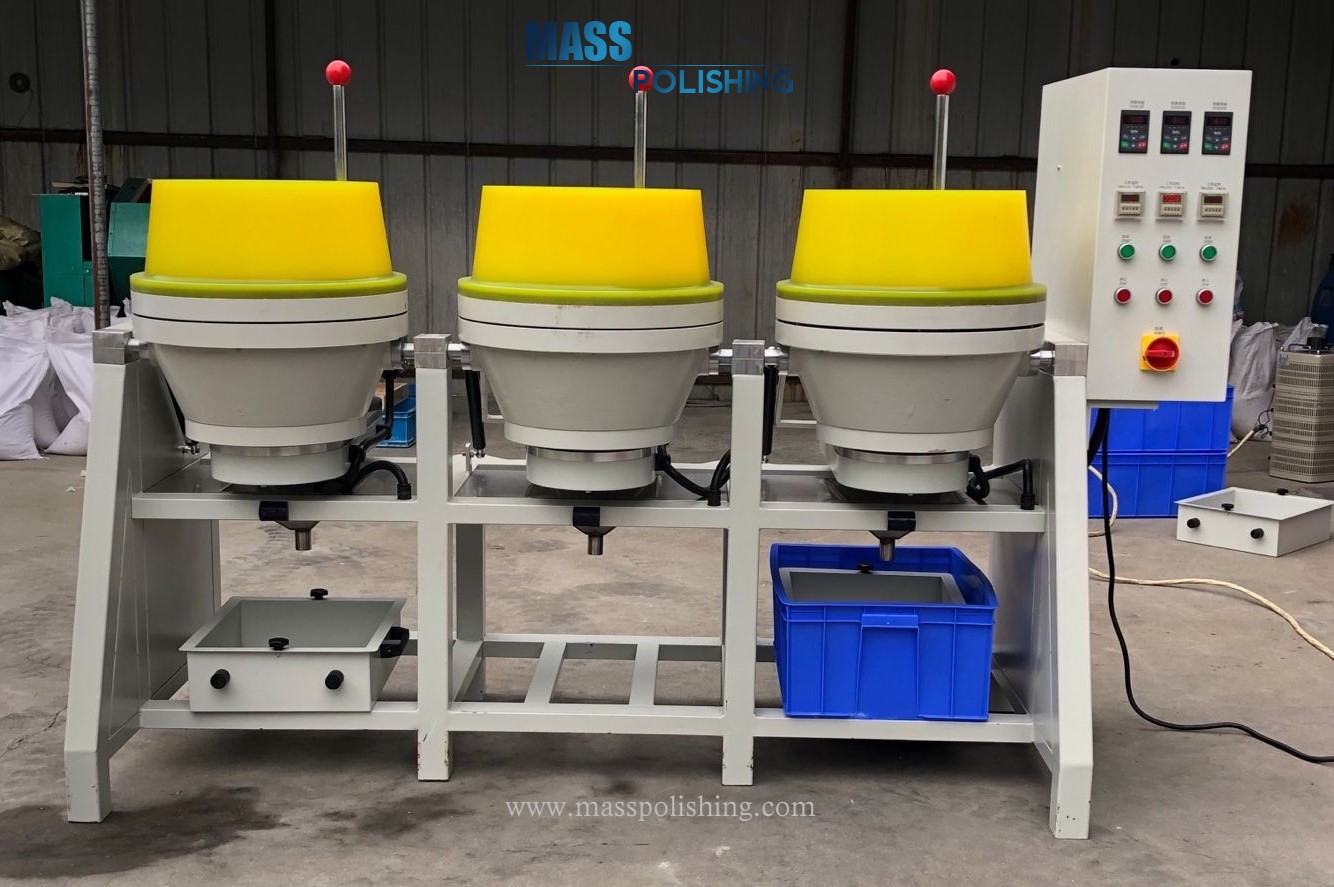
After achieving the desired finish, turn off the centrifugal disc finishing machine and remove the titanium parts. Thoroughly rinse the parts with water to remove any residual media or lubricant, and then dry them with a clean, soft cloth. To clean the machine, first, remove any remaining media and lubricant from the bowl. Then, wipe the bowl and all other parts of the machine with a clean, damp cloth to remove any remaining residue. If necessary, use a mild soap and water solution to clean the machine, being careful not to damage any components. Rinse the machine thoroughly with water and dry it with a clean, soft cloth before storing it.
To repeat the process for achieving a higher level of polish on titanium parts, you can start by removing the plastic media and cleaning the centrifugal disc finishing machine as described earlier. Then, add the porcelain media to the machine and add a water-based lubricant. Turn on the machine and let it run for a few minutes to ensure the even distribution of the media and lubricant. Add the titanium parts to the machine and run it for the desired amount of time to achieve the desired finish. Once finished, turn off the machine, remove the titanium parts, and rinse them thoroughly with water.

After rinsing the parts with water, it's important to dry them thoroughly before storing or using them. A hot air centrifugal drying machine is an effective way to dry the parts quickly and efficiently. Place the titanium parts in the machine and turn it on, making sure that the parts are evenly spaced and not touching each other. Leave the parts in the drying machine until they are completely dry.
1) Always use non-abrasive media and lubricant to prevent damage to the surface of the titanium.
2) Monitor the polishing process closely to avoid over-polishing or damaging the titanium parts.
3) Consider repeating the polishing process with different media and lubricants for an even higher level of polish.
4) Thoroughly clean the titanium parts before and after the polishing process to ensure a smooth, even finish.
5) Always wear appropriate personal protective equipment, such as gloves and safety glasses, when handling titanium parts.
6) Make sure that the finishing machine is properly maintained and cleaned regularly to ensure optimal performance.
7) Store the titanium parts in a clean, dry place to prevent any damage or contamination to the surface.
8) Consider using a microfiber cloth or a drying machine to dry the titanium parts as it is gentle on the surface and can help prevent scratches.
9) When polishing complex or intricate parts, it may be helpful to use a smaller finishing machine to ensure that all areas of the part are polished evenly.
10) Contact us today to learn more about our machines and how we can help you achieve the perfect finish for your titanium products.
By following these steps and tips, you can achieve a high-quality, polished finish on titanium parts using a centrifugal disc finishing equipment.
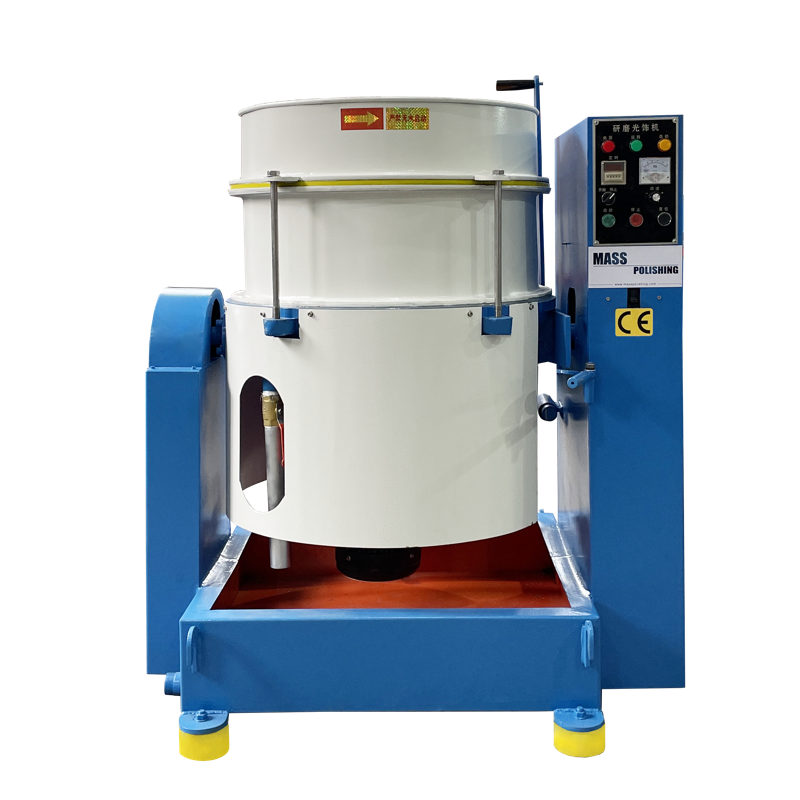 |
 |
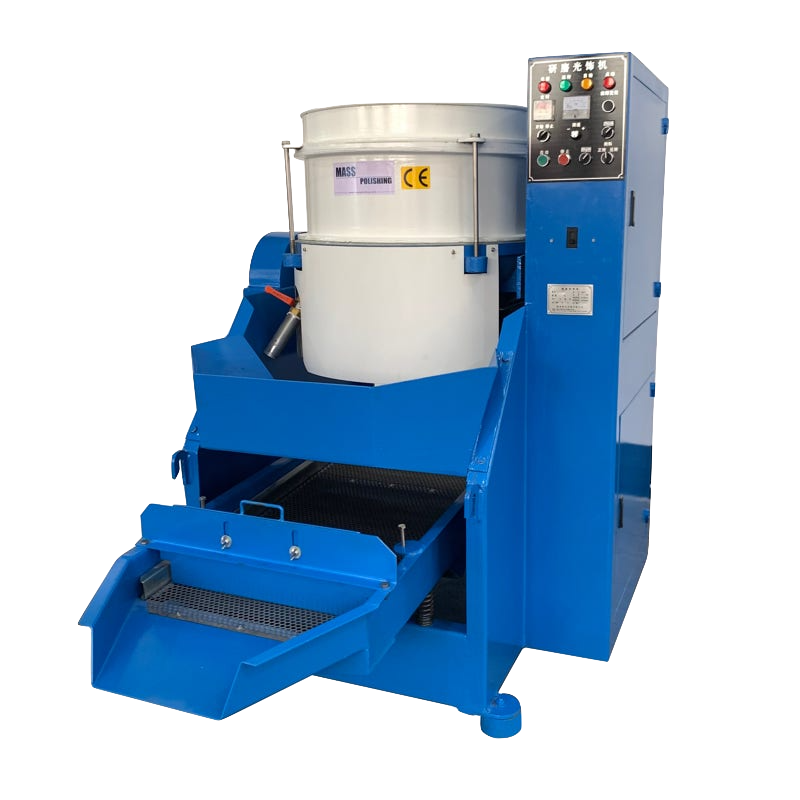 |
| >ED120F Centrifugal Disc Polisher< | >ED120E Centrifugal Disk Finisher< | >ED120FA Disc Finishing Machine< |
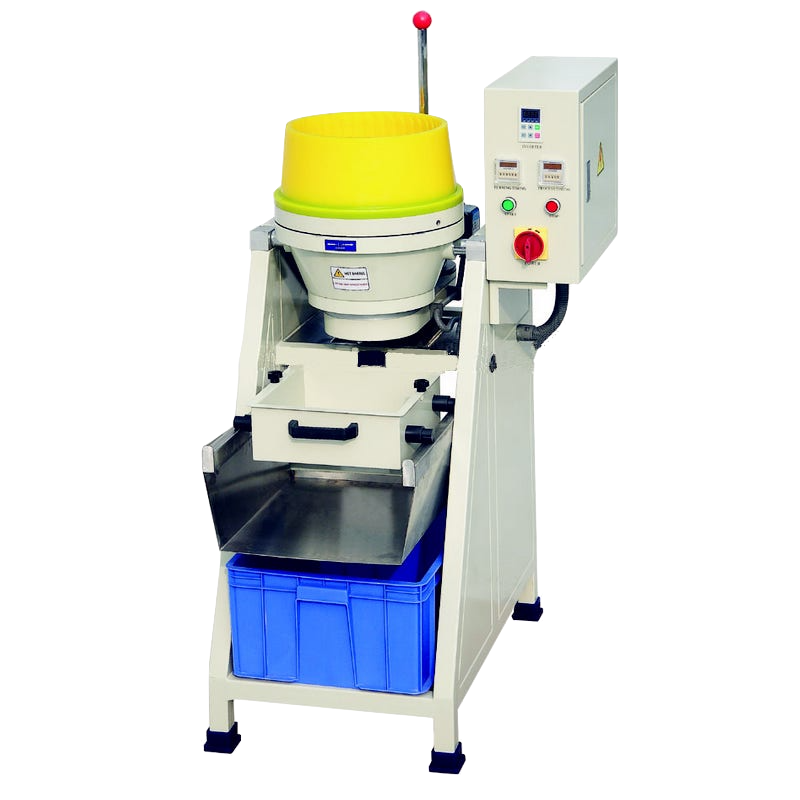 |
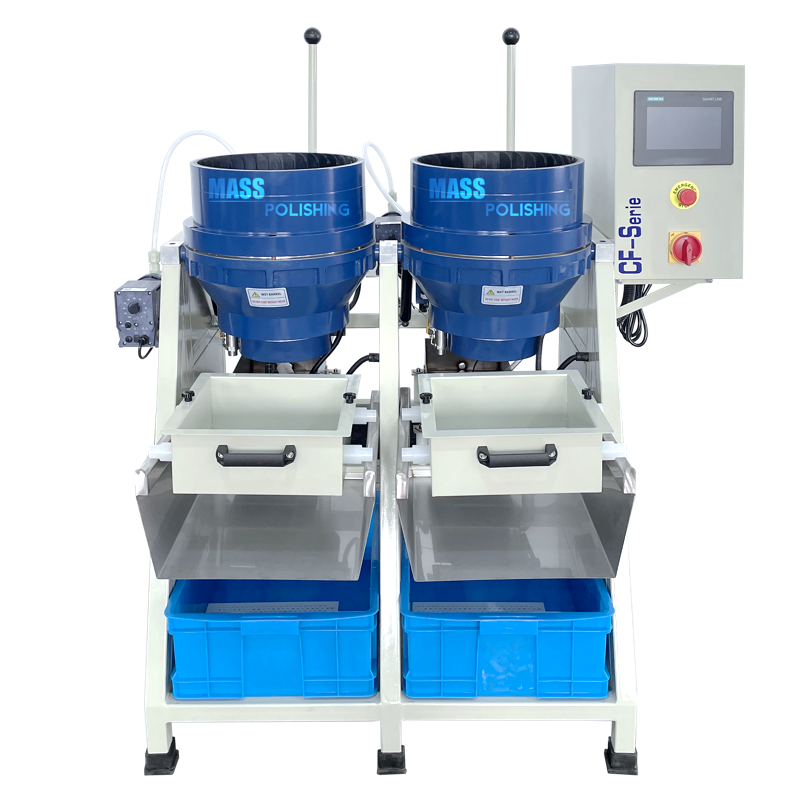 |
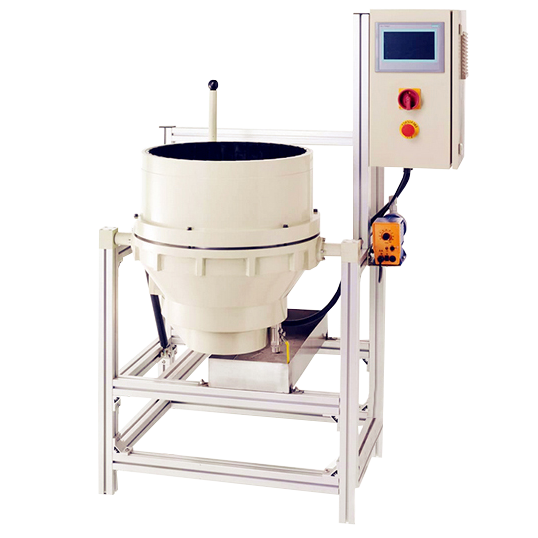 |
| >PD20 Disc Finishing Machine< | >CF18 Double Disc Finisher< | >50L Finishing Machine< |